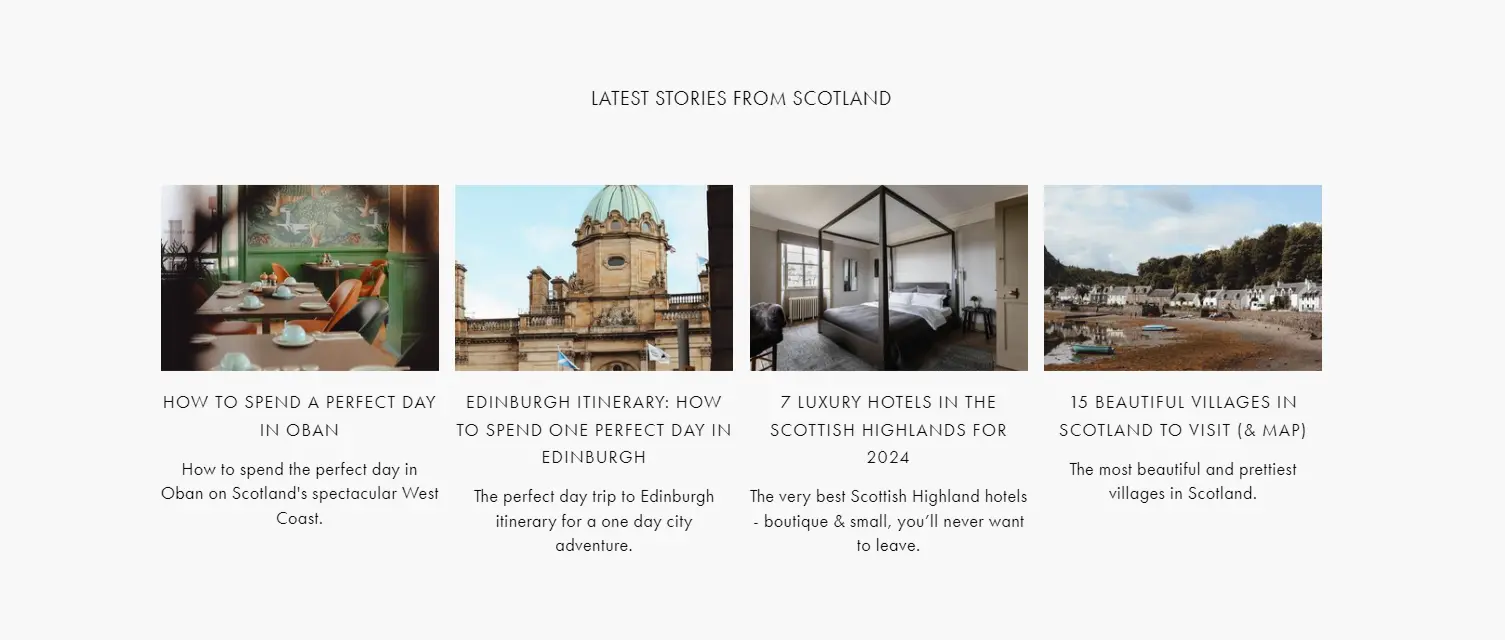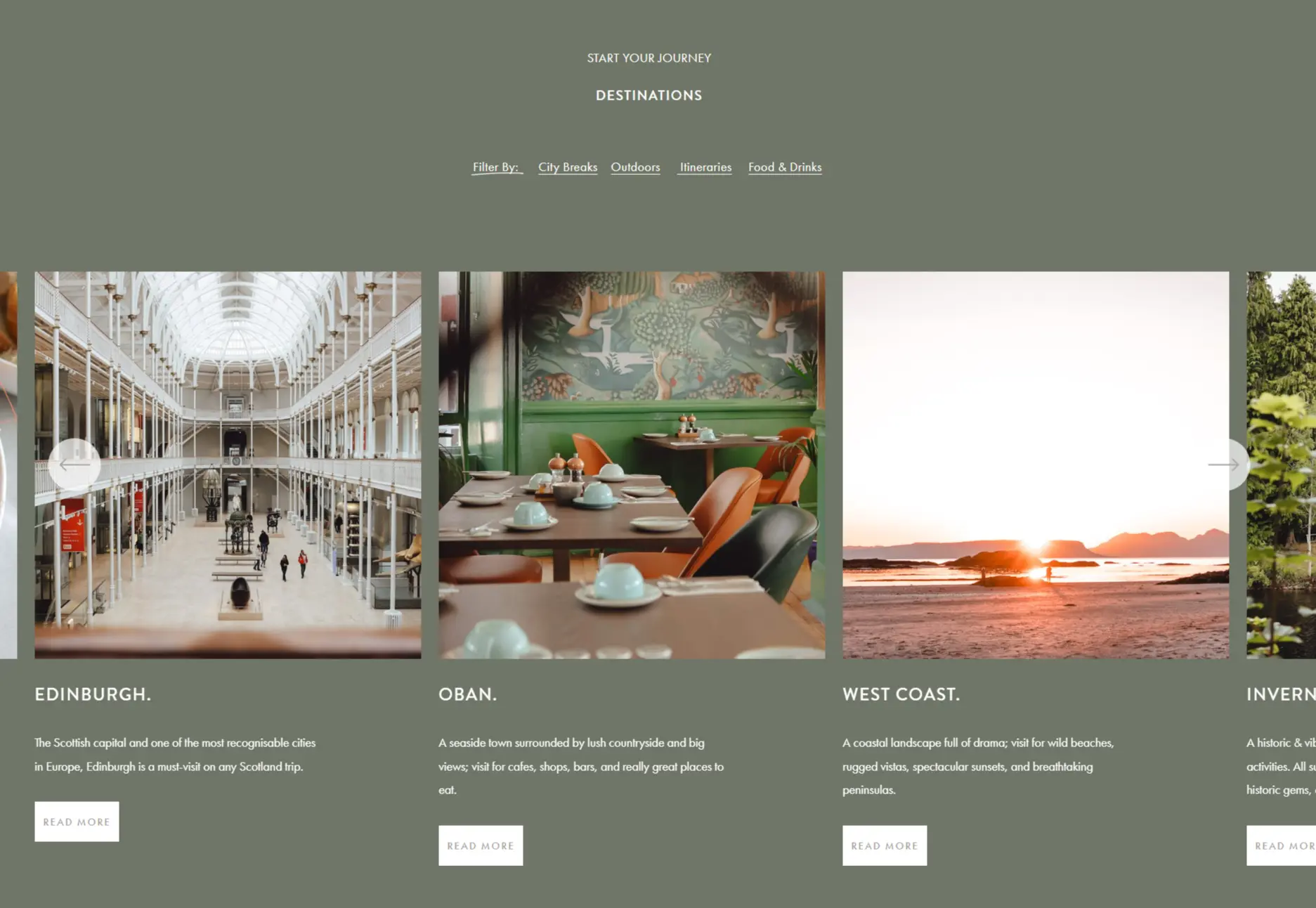My name is Lesley, and I’m a content publisher and freelance travel writer from Edinburgh. I started my blog, Wander Somewhere, around five years ago, using my love for travel and storytelling to help fellow travelers plan their trips and inspire them to visit destinations they might not have thought about.
What started as a hobby blog quickly took off, and my traffic skyrocketed to an average of 130,000 page views per month. I was able to transition from my corporate job to blogging full time.
Of course, this didn’t happen overnight. It took me about five years to get my blog up and running in earnest, but that time wasn’t wasted. I learned about affiliate marketing, SEO, backlinking, and much more – often the hard or wrong way! This knowledge allowed me to grow my blog into a full-fledged business in just one year.

Taking my traffic from zero to 100
At first, and for a long time, SEO wasn’t a priority, which meant my blog grew very slowly. For nearly five years, I averaged around 15,000 monthly page views. But towards the end of 2023, I realized that if I wanted to grow Wander Somewhere to the point where I could make a comfortable income, I’d have to make some big changes.
This started with a mindset change: I had to look at the blog as a business. Technical SEO was a big component that needed work, and I spent a lot of time ensuring my site was fast and user-friendly, including for mobile users.
This was a hectic period, and maintaining momentum was a challenge. But following my gear shift in 2023, my blog grew from 15,000 to just over 130,000 monthly page views. I also got accepted into Raptive, launched successful digital products, and was featured in Condé Nast Traveller! This just goes to show that hard work and patience pay off.

Where my traffic comes from
Here’s a breakdown of my blogging traffic, including my main sources and areas where I need to expand.
Let’s start with the beast that is Google since it’s on everyone’s mind nowadays. My approach to Google is simple: I’ve decided to stop worrying about it. I know that might sound unhelpful, but I simply can’t control Google, and worrying about the algorithm isn’t good for my mental health. Around the time of the March HCU, I was obsessively checking analytics, even in the middle of the night, and that’s not a good place to be. It also doesn’t accomplish anything.
What I can control is creating consistent, high-quality content and optimizing my site as much as possible. I now schedule one day per month to check the previous month’s analytics, make a note of any actions to take, and then focus on other things.
My second-biggest traffic source is Pinterest, which accounts for around 25% of total traffic. Pinterest is a great source of traffic and something I want to focus on going into next year.

While I haven’t been able to dedicate too much time to Instagram, I still think it’s a great platform for connecting with brands and building a community of travelers. Now that the blog is ticking along, Instagram will be high on my priority list.
How I write and manage my blog
I focus on original content but dedicate one day a week to updating older posts, optimizing affiliate conversions by adding affiliate links. Before writing or updating, I use KeySearch to find keywords that (a) I think I can rank for, and (b) my audience will find valuable.
These are sometimes as simple as “things to do,” “restaurants,” “outdoor experiences,” and “boutique hotels” at a certain destination.

The destination is usually determined by my travels, so I’m always writing about somewhere I’ve been and experienced firsthand.

I currently run my blog on my own – it’s my baby, after all, and I find it hard to delegate anything! But I’m also at a point where I know it would be sensible to get help (from a virtual assistant, editor, and/or freelance writer).
Given that it’s a solo enterprise, time management can be a challenge, and I know that burnout, or what Travelpayouts calls blogxiety, is a real possibility. So building a small team is something I want to do soon – otherwise, I won’t be able to grow, whether by developing more digital products or creating more great content.
How I keep everything organized
Here are some things I’ve found helpful to keep my blogging life running smoothly:
- Use a content planner.
- Schedule difficult tasks for first thing in the morning.
- Assign one task per day (for example, Monday could be keyword research, Tuesday writing, Wednesday Pinterest, etc.).
- Use tools such as Grammarly to make proofreading faster.
And my ultimate pro tip: write a business plan with clear SMART goals to help you stay on track.
Breaking down my blogging income
My blog generates around 75% of my overall monthly income. The rest comes from the bespoke itinerary service for Scotland that I introduced this summer. Here’s a breakdown:
- Ads from Raptive = 45%
- Affiliate income = 30%
- Travel planning and downloadable Scotland guide = 25%
I supplement this by offering web design, content, and photography services to various hospitality and hotel brands. But this has taken a backseat in the last year as I’ve grown the blog and focused on affiliate revenue.

Monetizing the blog
Part of my mindset change in late 2023 was realizing that I needed to monetize Wander Somewhere. Affiliate marketing was an obvious way to do so since my articles always recommend places to stay, tours, and car rentals.
I discovered Travelpayouts through another creator on Instagram and quickly realized how useful it is. It gave me access to an easy-to-use platform featuring all the travel brands I use, such as Booking.com, DiscoverCars, Viator, GetYourGuides, Tripadvisor, and more. With everything I need in one place, my workflow has become much more efficient. Plus, the affiliate commissions offered by many of the brands on Travelpayouts are easily some of the highest I’ve seen.
DiscoverCars was one of the first partner programs I began making money from, and it continues to bring in a steady income. Road-tripping is one of my most common ways to travel, so car rental fits really naturally into blogs that promote road trip itineraries and destinations often visited by car.
It helps that the platform is dedicated solely to the travel sector. One of the benefits of that is how engaged the Travelpayouts team is, and how interested they are in your success – they have been wonderful to work with.
How I use affiliate tools
Here are some of the best tips and tricks I can offer to both new and seasoned bloggers.
1. Make it sound natural
The most important thing is to create engaging content designed to fit organically around each link. That means I only recommend hotels, tours, car rentals, and other services I genuinely love and know my audience will find inspiring or helpful.
2. Let the visuals do the talking
I’ve also found that visuals help drive engagement. Reintroducing the text link alongside visual widgets makes the whole experience more engaging and interesting for the reader. I use a combination of natural placement, where the affiliate link appears naturally in the copy, and pop-up boxes that offer a “quick guide” with very intentional links to the best hotels, tours, or other services for readers who want information fast. Those are often my top-earning links.

3. Focus on what your audience needs
High-converting placement is all about understanding your audience. Mine are often busy professionals who don’t always have time to read a 2,000-word article, but who do want carefully chosen recommendations. I often experiment with affiliate link or widget placement to see what resonates best with them. “Quick guide” or “short on time” pop-up boxes are frequently the most successful, and I place these towards the top of the page.

4. Don’t forget to track!
Tracking my affiliate income has been really interesting. I’ve just started using Travelpayouts SubIDs and wish I’d done so earlier! Otherwise, I track my most-clicked links in Google Analytics or Squarespace analytics. If I spot a popular one (for example, to a particular hotel), I’ll feature it more prominently or link to it in other relevant posts.
My top articles are:





